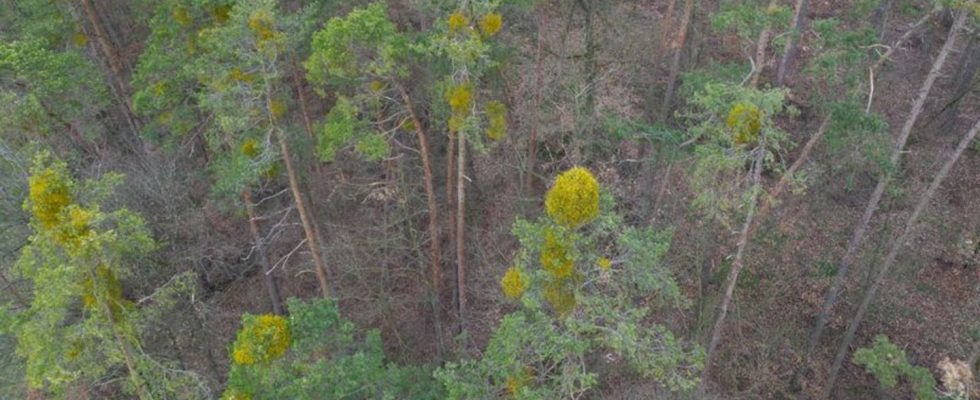Environment
Mistletoe on the rise: infestation of pines and deciduous trees
Pine trees are mainly found in northern Bavaria. photo
© Daniel Löb/dpa
Asterix and Obelix use mistletoe in their magic potion. At Christmas the couples kiss below her. But it can become a problem for trees under climate stress.
In northern Bavaria, experts now want to investigate how infected pine trees are doing and whether mistletoe spread patterns can be identified. Pine trees are mainly found in the north of the Free State. In 2007, the infestation with mistletoe was documented for the first time during the forest status survey, says Klemmt. At that time, 1.7 percent of the sample trees were infected; now it is almost 40 percent. He attributes the increase to global warming. “The living conditions for the mistletoe are getting better. The more severe frosts in winter are no longer there,” says Klemmt.
Since the 1980s, Berlin has been recording mistletoe infestations of deciduous trees such as maple, birch, linden and poplar in selected locations in the southwest of the city. Here too, experts are recording a significant increase in the number of populated trees.
Mistletoe (Viscum album) is known to many people as a Christmas decoration, lucky charm or medicinal plant. According to Klemmt, three species are native to this country: pine mistletoe, fir mistletoe and deciduous mistletoe. Mistletoe removes water and nutrients from the host tree. According to the Nature Conservation Association of Germany (Nabu), birds like to snack on the white berries, which are so sticky that parts stick to their beaks. If they then sharpen their beak on a tree or leave their droppings there, mistletoe seeds stick to the bark.

